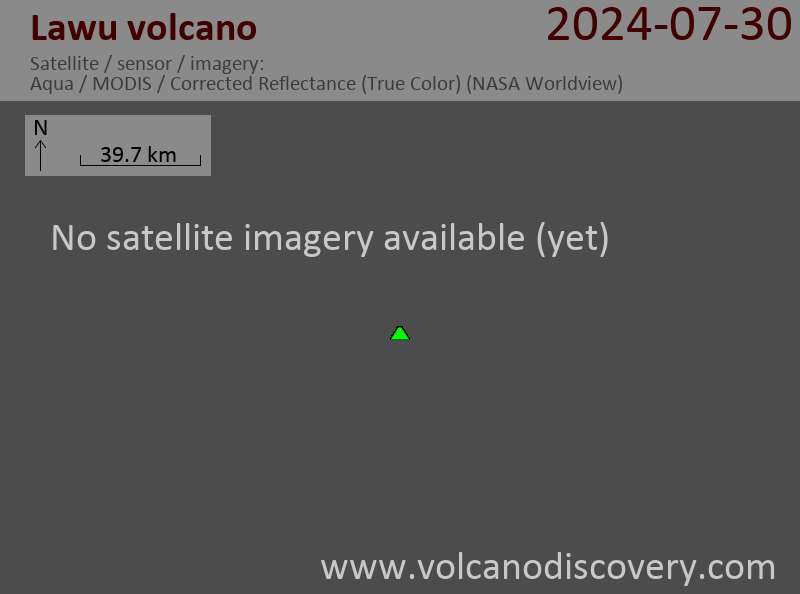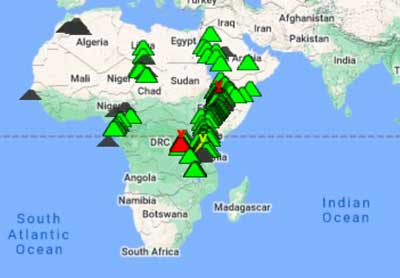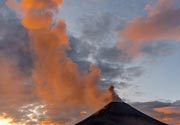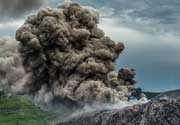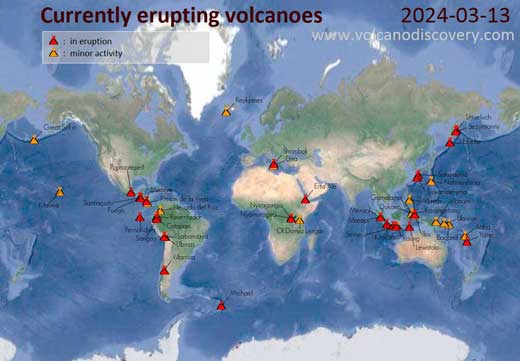Lawu Volcano
Updated: 18 avril. 2024 12:43 GMT -
Stratovolcano 3265 m (10,712 ft)
Java Centrale (Indonésie), -7.63°S / 111.19°E
Condition actuelle: normal / en sommeil (1 sur 5)
Java Centrale (Indonésie), -7.63°S / 111.19°E
Condition actuelle: normal / en sommeil (1 sur 5)
Lawu volcano is located in Central Java, east of Merapi volcano and near the town of Solo. Lawu consists of an older, deeply eroded northern section and younger eruption craters in the south, where its last eruption took place in 1885, the volcano's only historical eruption. Fumarolic activity is present ina deep ravine on the south flank at 2550 m elevation.
[smaller] [larger]
Eruptions du volcan Lawu: 1885
Derniers séismes proches
| Heure | Mag. / Profondeur | Distance / Lieu | |||
Introduction
The massive compound stratovolcano Lawu contains an older, deeply eroded volcano on the north separated by a crescentic rift valley from the younger Lawu volcano of Holocene age (van Bemmelen, 1949b). Parasitic crater lakes and pyroclastic cones are found at the eastern side of the rift. The younger Lawu volcano contains eroded crater rims; its latest activity, including construction of a lava dome, occurred at the south end. A fumarolic area is located on the south flank at 2550 m. The only reported historical eruption from Lawu took place in 1885, when rumblings and light ashfall were reported. A major eruption reported from Lawu in 1752 was from neighboring Kelut volcano.Lawu Volcano Photos
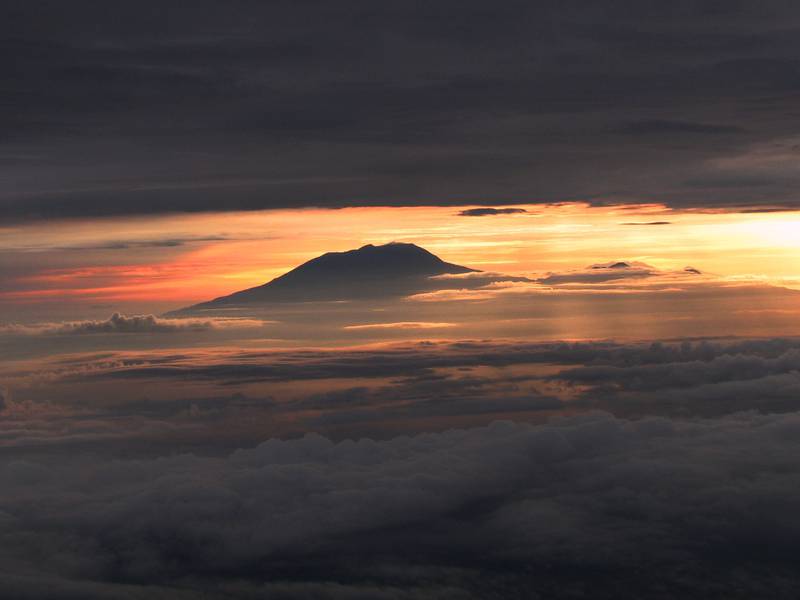
Volcan Lawu, vu du sommet du Merapi (février 2015) (image : Юлия Грубник) (Photo: ThomasH)
Eruptions du volcan Lawu
1979 earthquake swarm
Increased earthquakes near Lawu volcano started on 10th December 1978 and the number of tremors increased to a swarm around 14-15 May 1979, when over 1000 earthquakes were recorded over 24 hours, 50 of which were felt. Although the swarm is likely due to magma movements inside the volcano (i.e. an intrusion), no visible changes or eruptions occured. ...plus d'info
Increased earthquakes near Lawu volcano started on 10th December 1978 and the number of tremors increased to a swarm around 14-15 May 1979, when over 1000 earthquakes were recorded over 24 hours, 50 of which were felt. Although the swarm is likely due to magma movements inside the volcano (i.e. an intrusion), no visible changes or eruptions occured. ...plus d'info






